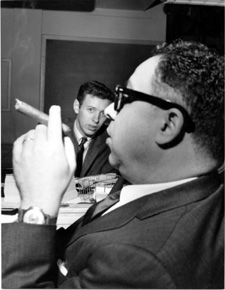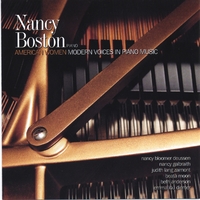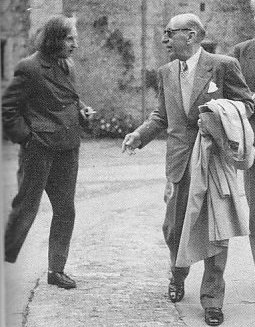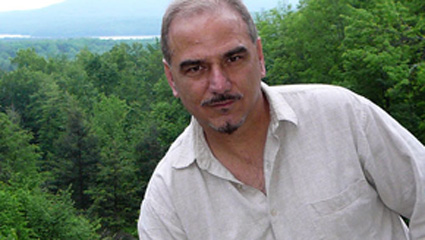 The picture was taken about 11 am on November 22, 1963 in the newsroom of The Parthenon, the student newspaper of Marshall University in Huntington, W.Va. The young man, barely recognizable to me today as a former version of myself, is interviewing Art Buchwald, his hero, for the paper. A half hour later Buchwald was on his way to the airport for a flight back to Washington and an hour or so later John F. Kennedy was dead. A couple of weeks after the tragic day, Buchwald wrote me a letter about the importance of not losing faith and going on despite the loss. He knew the Kennedys well. His loss was personal. He had met me once. He was one of the few people for whom the word great was not overly generous.
The picture was taken about 11 am on November 22, 1963 in the newsroom of The Parthenon, the student newspaper of Marshall University in Huntington, W.Va. The young man, barely recognizable to me today as a former version of myself, is interviewing Art Buchwald, his hero, for the paper. A half hour later Buchwald was on his way to the airport for a flight back to Washington and an hour or so later John F. Kennedy was dead. A couple of weeks after the tragic day, Buchwald wrote me a letter about the importance of not losing faith and going on despite the loss. He knew the Kennedys well. His loss was personal. He had met me once. He was one of the few people for whom the word great was not overly generous.
 Right now — just maybe — on Contemporary Classical Internet Radio, there might be the broadcast premiere of a string piece by Arnold Schoenberg. Is this the big moment? Find out here. (Thank Glenn Freeman.)
Right now — just maybe — on Contemporary Classical Internet Radio, there might be the broadcast premiere of a string piece by Arnold Schoenberg. Is this the big moment? Find out here. (Thank Glenn Freeman.)
Speaking of Arnie: yesterday I lugged a bigass score of Erwartung on the 2 train from Brooklyn College all the way to Borough Hall, then paraded it down Court Street. Crowds gathered to cheer my progress, women threw themselves at my feet, and a wine merchant presented me with a bottle of his best. Now I know how Schoenberg himself must have felt all those years!
Meantime, Jay Batzner is laying “devastation throughout the verdant countryside,” and Jacob Sudal has pictures. In the Composers Forum, so far the “nays” have it in the Great To Beam Across the Barline debate.
Oh — and for some reason I can’t post a comment to my previous post. Chris Becker, your answer is here.
The description in the title is how Messiaen described a section of the piano part in the second movement of his great “Quartet for the End of Time” (1941). Last night’s Philharmonic chamber concert in Disney Hall came as close as I can imagine to enabling me to see sounds. It was a gorgeous performance by members of the Phil (with CalArts’ Vicki Ray as pianist). I’ve only been to one other live performance, and of course it’s one of the Messiaen tracks on my iPod, but the sound of the performance made it seem as if I was hearing sections for the first time.
Sunday’s concert by the Phil was the second program of the season to be recorded for release on iTunes, and it’s another “must have”. Salonen began with Webern’s “Five Pieces for Orchestra” (1913), a delight for the ears as well as for the brain. The first time I heard the work was in the sound-limited Dorothy Chandler in the program in which Mehta introduced the work to the Philharmonic audience and quieted the audience filing in for the second work on the program by saying that since the work was so short he could understand how some were sorry they had missed it, so he played the work again. On Sunday’s concert Salonen then led a great performance of Mahler’s Seventh (1905). I’m glad I’ll have the recording of that performance.
 Robert Ashley’s latest opera, Concrete, deals with the secrets of ordinary people who are accompanied by Ableton Live. It opens tonight. Steve Smith had a substantive piece in the Times a few days ago.
Robert Ashley’s latest opera, Concrete, deals with the secrets of ordinary people who are accompanied by Ableton Live. It opens tonight. Steve Smith had a substantive piece in the Times a few days ago.
Lawrence Dillon likes the cold; go over and read some CD reviews; and I’m feeling beamy these days. Or should I?
Let’s hear it for winter!
Jerry sent me a box load of CDs for review under the agreement that I will choose lesser-known composers. So a new column called “Lost and Found” is born, and will (hopefully) be an every-other week installment.
 American Women: Modern Voices in Piano Music (self-published)
American Women: Modern Voices in Piano Music (self-published)
Nancy Boston, piano
In American Women: Modern Voices in Piano Music, Nancy Boston explores piano literature from American women composers, or less specifically American composers. The recording title could do without the introductory gender reference, despite Ms. Boston’s good intentions. The music featured here represents American composers, in the same way an all male recording (often the case) represents American composers. The fact that we call attention to the femininity of this collection doesn’t change our impressions, good or bad, of the notes.
The music on Modern Voices in Piano Music represents a style of writing on par with some of the great piano composers (Schumann, Chopin, Debussy, etc). From the character pieces of Nancy Bloomer Deussen (Two Pieces for Piano), Judith Lang Zaimont (Suite Impressions), Beth Anderson (September Swale), and Beata Moon (Piano Fantasy), to the larger sonatas of Nancy Galbraith and Emma Lou Diemer.
In each case, these fine composers have shown their ability to write for an instrument that can so often be treated poorly. On occasion the music was too “easy” for my taste, but I’m just another listener. Nancy Boston’s performances are convincing and inspired, partly due to her affinity for the “cause” of women composers. Let’s hope that music by women continues to be considered equal to their brethren through performers like Nancy Boston.
 The Louisville Project (Arizona University Recordings 3127)
The Louisville Project (Arizona University Recordings 3127)
Richard Nunemaker, clarinet
Featuring: Andrea Levine, Dallas Tidwell, Timothy Zavadil, clarinets; The Louisville Quartet (Peter McHugh and Marcus Ratzenboeck, violins; Christian Frederickson, viola; Paul York, cello); Krista Wallace-Boaz, piano
Richard Nunemaker’s CD published by Arizona University Recordings presents works composed since 2000, and recorded (mostly) in Louisville during 2003. This recording is dedicated to the memory of M. William Karlins (1932-2005), one of the composers featured on the disc, and one who was present at the recording of one of his works.
Rothko Landscapes (2000) by Jody Rockmaker is meant to be a musical realization of Rothko paintings and utilizes quite a bit of extended techniques. Rockmaker’s use of visual allusions doesn’t impede or help the listener, as the music stands on its own.
Marc Satterwhite’s two offerings Clarinet Quintet(2002) and Las viudas de Calama (The widows of Calama) (2000) use the clarinet in a more melodic way than other works on this disc. The Clarinet Quintet, scored for string quartet and clarinet (B-flat and bass), is a compelling work with long phrases and a scoring that is always careful and delicate. Las viudas de Calama is based on a poem of Marjorie Agosin, a Chilean writer, describing the atrocities of the Pinochet regime in a city called Calama, situated in the Atacama Desert. Agosin’s chilling prose, which seems particularly relevant in light of the recent death of Pinochet, is translated into a work for bass clarinet and piano.
Karlins’ work is characterized by long phrases and soft dynamics, requiring skillful breathing and careful articulation. Just a Line from Chameleon makes proud of the fact that it is composed “in registers of the instrument that are difficult to control at a soft dynamic level.” Improvisation on “Lines Where Beauty Lingers” is based on a jazz tune by Ron Thomas.
Meira M. Warshauser pairs two bass clarinets against each other, describing tensions and commonalities (past and present) between the descendants of Ishmael (Palestinians) and Isaac (Israelis). The title Shevet Achim (Brothers Dwell) is taken from Psalm 133, v. 1 “How good and how pleasant it is when brothers dwell together as one.”
 Michael Hersch Symphones Nos. 1 and 2 (Naxos 8.559281)
Michael Hersch Symphones Nos. 1 and 2 (Naxos 8.559281)
Bournemouth Symphony Orchestra
Marin Alsop
It is always an accomplishment to have an orchestral work performed. Greater still is to have that work performed and recorded by a leading orchestra and a conductor who is an avowed promoter of new music. Marin Alsop and the Bournemouth Symphony Orchestra have done so by recording four orchestral works by Michael Hersch (b. 1971) on the Naxos label, a company that never seizes to amaze in the risks they take.
Hersch’s Symphony No. 2 (2001) is a prime example of today’s typical orchestral composition: Sweeping crescendos, large chords filled with brass and percussion and punctuating gestures. Melodies are largely absent, and when they do appear, are short-lived, though not unskillful. The third movement offers a peek into a melody, one we could use more of. His first symphony from 1998 is an early, Second-Viennese-School-influenced work, with perhaps a few more tunes and weaker orchestrations.
Both Fracta (2002) and Arraché (2004) display a more “modern” style and, again, the kind of writing that appeals to the large orchestral sound. Arraché includes some fugal writing, and by implication melodies, though the modern clichés are never far off. Fracta is a reworking of an earlier chamber work, accompanied by a poem by Friedrich Hölderin.
 Disasters of the Sun (Canadian Music Centre 11806)
Disasters of the Sun (Canadian Music Centre 11806)
Barbara Pentland, composer
Judith Frost, mezzo-soprano
Turning Point Ensemble
Owen Underhill
Barbara Pentland deserves a bit of introduction. Born in Winnipeg in 1912, Pentland began composing around age nine, but was plagued with bad health and strict parents, both which impeded her compositional growth and studies. While living in Paris, she was “allowed” to study composition, and did so under Vincent d’Indy. After returning to the North American continent, Pentland received a fellowship to study at Juilliard and studied with Copland in Berkshire. It was a trip to Darmstadt and exposure to Webern, through Dika Newlin, that turned her compositional voice from a style influenced by d’Indy to the post-serial style en vogue during the late 40’s and 50’s.
The works on this Canadian Music Centre release, represent works from the late 70’s to mid 80’s, and one work from her “early” period. The largest work (both in time and performing forces) is Disasters of the Sun (1977) for mezzo-soprano and chamber ensemble, based on a text of Dorothy Livesay (1909-1996), whom Pentland met in the 30’s. This is a dramatic work requiring thirty minutes of athleticism from the singer, and complex rhythmic counterpoint for the chamber orchestra. Commenta and Quintet for Piano and Strings, date from 1980-1981 and 1983, respectively. All three of the aforementioned compositions make generous use of extended and improvisatory techniques, but never stray from a lyrical writing, even if it’s rigid. The Octet for Winds is a neo-Classical work from 1948 composed while Pentland was at the MacDowell Colony (it was here where she met Dika Newlin), but begins to incorporate serial techniques (with a nod to Stravinsky). The Canadian Music Centre website (http://www.musiccentre.ca/) has a good biography, along with audio and score samples.
 Anyone who’s dabbled even casually with the music world knows it’s full of heartbreak, exhilaration, passion, and drama. A profession overstuffed with possibilities for storytellers in all media, it’s a wonder to me why more film directors, novelists, and playwrights don’t take the plunge.
Anyone who’s dabbled even casually with the music world knows it’s full of heartbreak, exhilaration, passion, and drama. A profession overstuffed with possibilities for storytellers in all media, it’s a wonder to me why more film directors, novelists, and playwrights don’t take the plunge.
But appearing today in bookstores across the fruited plain is Overture (Doubleday, $24.95), the debut novel by Yael Goldstein. Overture is about a famous violinist who also has a passion for composition. But her marriage to an acclaimed and revolutionary composer compels her to sacrifice her own composerly ambitions. (Alma Mahler, anyone?) Then to make matters even more complicated, she gives birth to a daughter who quickly shows talent for . . . composition.
Too many composers at the bench? You’ll just have to find out for yourself.
There are a few readings coming up around the country. Some even boast some (gasp) new music inspired by the book. Check them out in the comments.
 Five minutes before Elisabeth Lutyens appeared live on BBC Radio 4’s ‘Start the Week’ in 1979 she threatened to denounce Russell Harty as a ‘homosexual interviewer’ if he mentioned the phrase ‘lady composer’; thankfully Harty avoided using the words when the programme was on air. Lutyens was a larger than life personality who pioneered serial techniques in her unfairly neglected music. She was also well connected as my photo shows. For the full story, and a recommendation of a new CD of her music, click on Walking with Stravinsky.
Five minutes before Elisabeth Lutyens appeared live on BBC Radio 4’s ‘Start the Week’ in 1979 she threatened to denounce Russell Harty as a ‘homosexual interviewer’ if he mentioned the phrase ‘lady composer’; thankfully Harty avoided using the words when the programme was on air. Lutyens was a larger than life personality who pioneered serial techniques in her unfairly neglected music. She was also well connected as my photo shows. For the full story, and a recommendation of a new CD of her music, click on Walking with Stravinsky.

We’re a little late in reporting this, but last month composer George Tsontakis was awarded the Charles Ives Living by the American Academy of Arts and Letters. I had never heard of this prize before, but it’s a sweet deal. Tsontakis receives $75,000. each year for three years provided that he forgo all normal paid work. He may, however, accept commissions. The Charles Ives Living was established by Ives’s widow with royalties from her late husband’s music. This round the selection committee was chaired by none other than William Bolcom. The previous three winners were Stephen Hartke, Chen Yi, and Martin Bresnick.
Can we agree that between this and the Grawemeyer Tsontakis is on a serious roll these days? I think we can.
Otherwise things look pretty quiet here today. I’m taking over the daily post here for two weeks as Jerry sees to some Top Secret S21 Business. Stay tuned . . .
Mark Turner said it best, as reported by Do the Math:
Fuck those motherfuckers who don’t give it up for Michael Brecker.
[youtube]GRFMG5C2PPA[/youtube]
Our regular listen to and look at living, breathing composers and performers that you may not know yet, but I know you should… And can, right here and now, since they’re nice enough to offer so much good listening online:
Hidayat Inayat-Khan (b.1917 — India / Europe)

Taken mostly from the 1981 Cambridge International Biographical Centre entry, I just have to give you a good taste of this very interesting bio:
Hidayat Inayat-Khan’s great-grandfather, Mula Bux, founded the first Academy of Music in India in the 19th century, and also invented the music notation system carrying his name. Born in 1882, Professor Inayat Khan, father of Hidayat Inayat-Khan, was the greatest classical musician in India in his time. He wrote several books, among them ‘Minca-I-Musicar’, the first treatise on Indian music. His first historical Western concert was given on 9 April 1911, in the Hindu Temple of San Francisco. Later, in Russia, he met Scriabin. In 1913 Lucien Guitry organised Professor Inayat Khan’s first concert in Paris, where Claude Debussy was also inspired by the charm of Indian music. It is reported Professor Inayat Khan gave Claude Debussy lessons in Vina playing.
Hidayat Inayat-Khan was born in London on 6th August 1917, and was cradled in an atmosphere of Indian music. His western musical education began in 1932 at the Ecole Normale de Musice de Paris, in the violin class of Bernard Sinsheimer; the composition class of Nadia Boulanger; and the orchestra class of Diran Alexanian. Later, he attended chamber music courses given by the Lener Quartet in Budapest. In 1942 Hidayat Inayat-Khan became Professor of music at the Lycee Musical de Dieulefit, France, and later in Holland joined the orchestra of Haarlem as violinist. In 1952 He conducted the orchestra of Hertogenbosch for the broadcasting of his Poème en Fa for orchestra and piano, in a world-wide program, and, in the same year, founded his first chamber music orchestra ensemble.
Significant occasions in Hidayat Inayat-Khan’s professional life include the playing, on 4th May 1957, of his Zikar Symphony at Salle Pleyel, Paris. On the occasion of Mahatma Gandhi’s centenary, on 21st November 1969, Hazrat Inayat Khan’s Gandhi Symphony was played in a special concert organized by UNESCO in Holland. This was also played in 1971 during a broadcasting of ‘The Voice of America’, as well as on the United Nations Radio in the USA and was later recorded by the US Armed Forces Radio Stations in a world-wide Carmen Dragon show. In 1988 Hidayat Inayat-Khan assumed the role of Representative-General of the Sufi Movement International and Pir-o-Murshid of its Inner School. He divides his time between Holland and the family home in Suresnes, but travels extensively, giving classes and lectures on Sufism.
I didn’t see a death-date; if not he’s still pushing 90 this year. The Sufi Petama Project hosts an extensive site dedicated to Hidayat Inayat-Khan, including MP3s of a number of his works (and links to places to buy CDs of this rather rare stuff). On the left navigation, head to the Quartet op. 48 first; starting somewhere in Delius/Debussy land, by the third movement rolls around (which mysteriously expands the quartet to full string orchestra) you’ll be strongly reminded of Hovhaness. Then give his Ziukar Symphony or Message Symphony a go. If it all sounds up your alley, my work is done… If not then never fear, I’ll head back into experimental territory next outing!